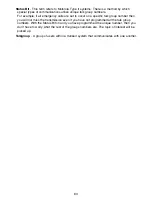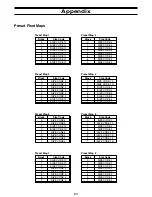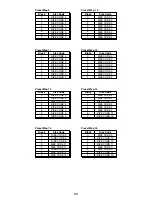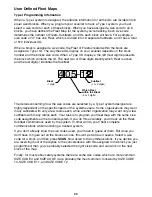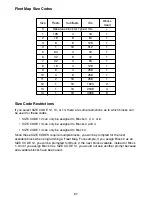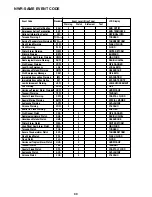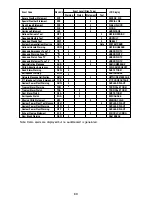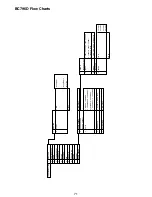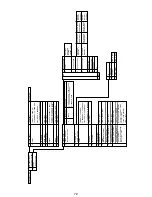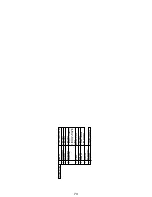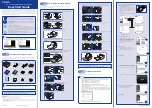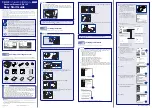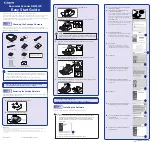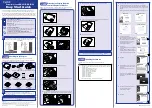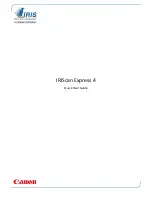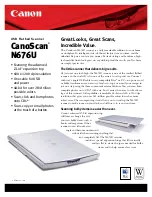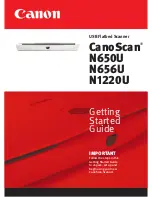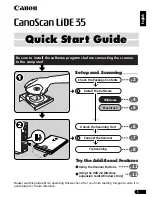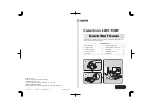
Glossary of Terms
Alpha tag
- This term refers to an alphanumeric text tag that you can enter to describe the
individual frequencies that you have programmed. Rather than having to associate a spe-
cific frequency to the individuals that are using it, you can enter the actual name of the
group. This will eliminate the need for memorizing the group’s frequency.
Attenuator
- This scanner comes with a feature to attenuate or reduce the signal strength.
The built-in attenuator can be turned on specific frequencies to prevent strong signals from
overloading the scanner input, possibly damaging the scanner or missing other transmis-
sions due to the repeated stopping on the stronger signal.
Clone
- This term identifies the ability to set up a duplicate scanner. This function allows
you to clone all the programming information, including frequencies, talkgroups and alpha
tags as well as bank settings and other parameters from one BC796D to another or
BC296D.
Control Channel
- This is the frequency within a trunking system that runs the system. On
Control Channels (sometimes called Data Channels) you will hear a buzz saw sound. For
the most part, it is the sound of the system’s central computer directing talkgroups to
particular voice (working) frequencies within the system.
CTCSS
- (Continuous Tone Controlled Squelch System) refers to a system where the radio
receivers are equipped with tone responsive devices which allow audio signals to appear
at the audio output, select voice processing such as scrambling or control repeater func-
tions only when a carrier modulated with a specific tone is received. This method may be
used to restrict access to the repeater or receiver, or reduce interference where several
stations with output frequencies in close proximity of each other make it difficult to hear
the conversation you are interested in. With CTCSS squelching, you can eliminate the
possibility of hearing unwanted conversations by selecting one of the 38 standard subaudi-
ble tones. You will only hear those transmissions that have been programmed on specific
frequencies with the specific subaudible tone that you have selected.
DCS
- (Digital Controlled Squelch) refers to a system where the radio receivers are
equipped with data burst responsive devices which allow audio signals to appear at the
audio output, select voice processing such as scrambling or control repeater functions only
when a carrier modulated with specific data burst is received. This method may be used to
restrict access to the repeater or receiver, or reduce interference where several stations
with output frequencies in close proximity of each other make it difficult to hear the
conversation you are interested in. With DCS squelching, you can eliminate the possibility
of hearing unwanted conversations by selecting one of the 104 standard data burst
subaudible tones. You will only hear those transmissions that have been programmed on
specific frequencies with the specific subaudible tone that you have selected.
Enter Lock
- This is the term used for locking the keypad. This prevents accidental re-pro-
gramming of channels and talkgroups entered into memory. The default setting is OFF.
When ENTER LOCK is enabled, the following functions will be disabled:
• Enter or modify the Memory Channel frequency
• Enter or modify the Tone information
61
Содержание APCO 25
Страница 1: ......
Страница 2: ......
Страница 6: ......
Страница 81: ...75 Memo ...
Страница 82: ...Memo 76 ...
Страница 83: ...Memo 77 ...
Страница 84: ......

















